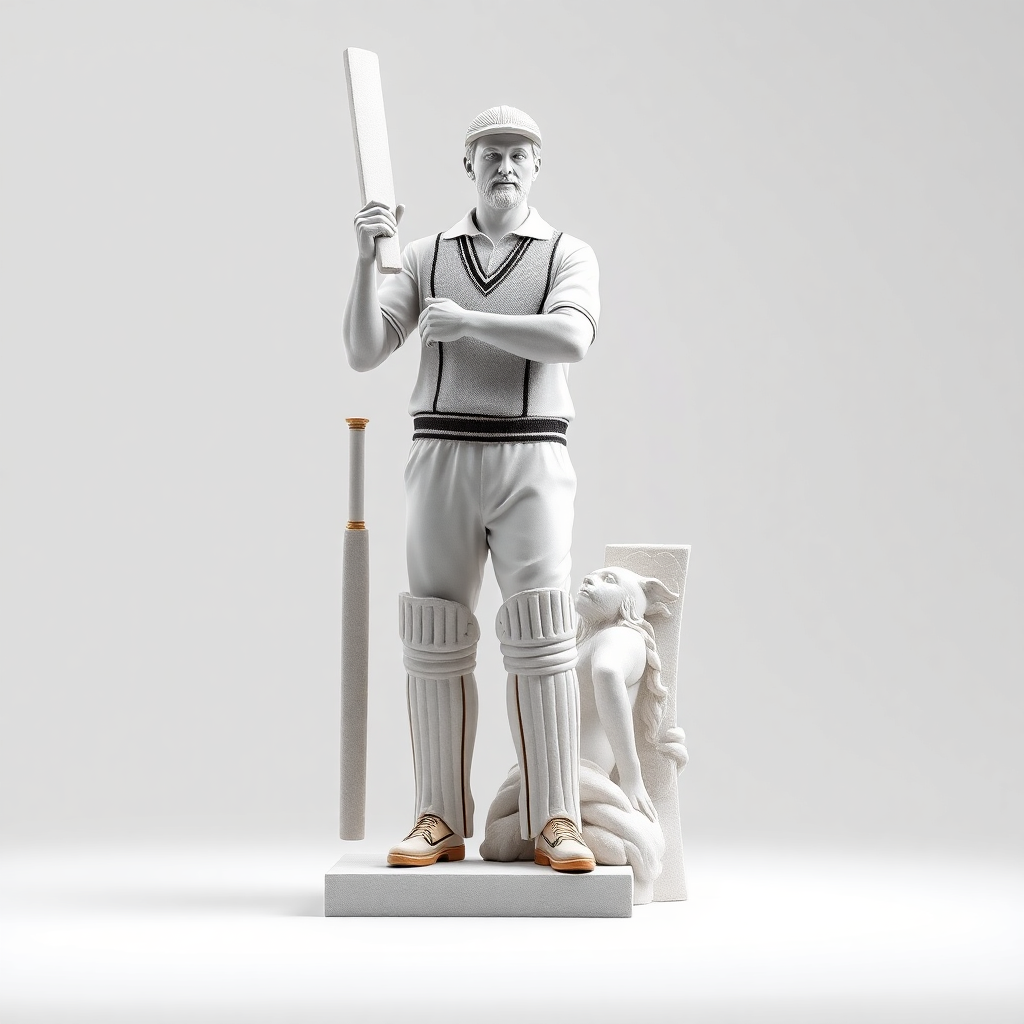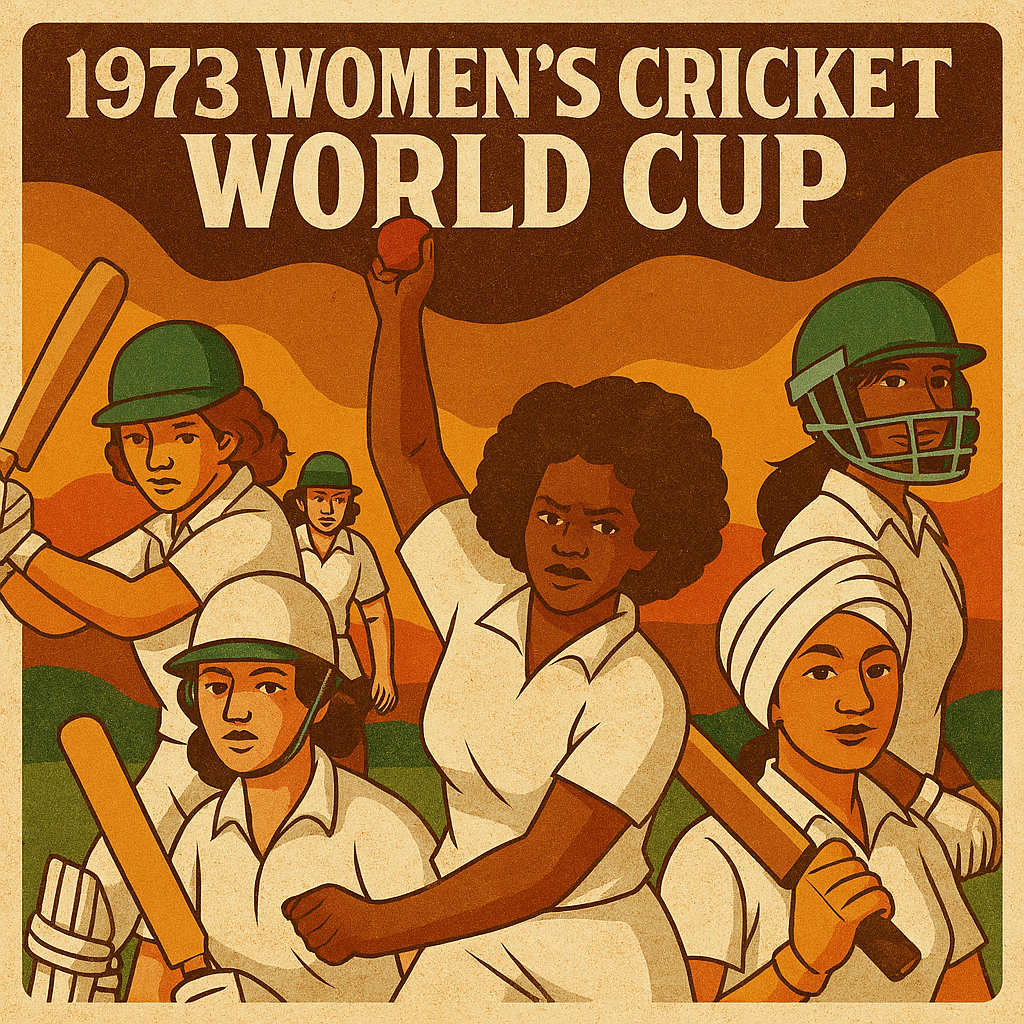The Ashes In Cricket – The Meaning Of The Ashes
Hard Rivalry Since 1882
The Ashes is the most famous cricket rivalry in the world, contested between England and Australia. It began in 1882 when Australia defeated England at The Oval, sparking a satirical obituary that declared English cricket had died and its ashes would be taken to Australia. From that moment, the term “The Ashes” became part of cricket history. The urn, a small terracotta vessel, became the symbolic trophy, though it was never intended as an official award. This has been a hard rivalry since 1882
The series is played biennially, usually consisting of five Test matches, alternating between England and Australia. Over time, The Ashes has grown into a cultural phenomenon, representing national pride for both nations. It is not just about cricket but about history, tradition, and identity. Fans across generations have followed the series with passion and intensity. The rivalry has produced unforgettable moments, legendary players, and dramatic matches. It remains the pinnacle of Test cricket competition.
This article is topic is based on mostly The Ashes In Male Cricket. Other topics of formats to come later.
Origins Of The Ashes – How It Began
The Ashes officially began in 1882–83 when England toured Australia after their defeat at The Oval. England won that series, which is considered the first official Ashes contest. The urn was presented as a symbol of England’s loss, though it was never formally recognized as a trophy. Early series were fiercely contested, with both nations eager to prove supremacy. Matches were often played in challenging conditions, testing skill and endurance. The rivalry reflected broader cultural ties and tensions between Britain and its former colony. The Ashes became a way for Australia to assert its sporting independence. England, meanwhile, sought to reclaim its dominance. These early encounters laid the foundation for a rivalry that continues to this day.
Table – Early Ashes Milestones
| Year | Location | Outcome | Significance |
|---|---|---|---|
| 1882 | The Oval, London | Australia victory | Sparked the Ashes name |
| 1882–83 | Australia | England victory | First official Ashes series |
| 1890 | England | England victory | Established regular contests |
| 1894–95 | Australia | England victory | Dramatic comeback |
| 1902 | England | Australia victory | Famous one-wicket win |
Legendary Figures – Icons Of The Rivalry
The Ashes has showcased some of cricket’s greatest figures. Sir Donald Bradman became a symbol of Australian dominance. Shane Warne brought artistry and drama with his spin bowling. Ian Botham inspired England with his all-round brilliance in 1981. Alastair Cook’s leadership and determination defined modern English success. Glenn McGrath’s precision bowling dismantled opponents with consistency. Ricky Ponting captained Australia during a dominant era. Andrew Flintoff became a hero in 2005 with his fiery performances. Jack Hobbs and Herbert Sutcliffe were prolific in the early 20th century. Steve Waugh embodied Australian resilience and leadership. These figures elevated The Ashes beyond sport, becoming cultural icons.
Points – Key Figures In The Ashes
- Donald Bradman – Symbol of Australian dominance
- Shane Warne – Master of spin bowling
- Ian Botham – Hero of 1981 series
- Alastair Cook – Modern English leader
- Glenn McGrath – Precision bowler
- Ricky Ponting – Dominant captain
- Andrew Flintoff – Inspirational in 2005
- Jack Hobbs – Early batting great
- Steve Waugh – Resilient leader
- Herbert Sutcliffe – Prolific run scorer

Historic Matches – Defining Moments
The Ashes has produced unforgettable matches that live in cricketing folklore. The 1902 Test at The Oval saw Australia win by one wicket. In 1936–37, Australia came back from 0–2 down to win the series 3–2. The 1953 series ended England’s long drought with a 1–0 victory. The 1981 series, known as “Botham’s Ashes,” featured remarkable comebacks.
The 2005 series is considered one of the greatest ever, with England winning 2–1. Australia’s dominance in the 1990s and early 2000s showcased their strength. England’s 2010–11 triumph in Australia was their first since 1986–87. The 2019 series ended in a 2–2 draw, with Ben Stokes’ Headingley heroics standing out. Each series adds new chapters to the rivalry. The Ashes thrives on drama, tension, and national pride.
Table – Famous Ashes Matches
| Year | Venue | Outcome | Highlight |
|---|---|---|---|
| 1902 | The Oval | Australia victory | One-wicket thriller |
| 1936–37 | Australia | Australia comeback | Historic turnaround |
| 1953 | England | England victory | Ended drought |
| 1981 | England | England victory | Botham’s heroics |
| 2005 | England | England victory | Greatest modern series |
Venues Of The Ashes – Iconic Grounds
The Ashes has been played at some of the most famous cricket grounds in the world. In England, matches are hosted at venues such as Lord’s, The Oval, Old Trafford, Headingley, and Edgbaston. In Australia, the series is played at the Melbourne Cricket Ground, Sydney Cricket Ground, Adelaide Oval, Brisbane’s Gabba, and Perth’s stadiums. Each ground has its own traditions, atmosphere, and memorable matches. Lord’s is known as the “Home of Cricket” and holds deep historical significance.
The Melbourne Cricket Ground is famous for its massive crowds and Boxing Day Tests. The Sydney Cricket Ground has witnessed many dramatic finales. Adelaide Oval is admired for its picturesque setting and day-night Tests. The Gabba is renowned for its lively pitch and strong home advantage. Perth has hosted fast-bowler friendly contests. These venues are more than stadiums; they are stages for history. The Ashes is inseparable from the character of these grounds.
Points – Iconic Ashes Venues
- Lord’s – Home of Cricket
- The Oval – Historic 1882 match
- Old Trafford – Northern powerhouse
- Headingley – Site of dramatic comebacks
- Edgbaston – Electric atmosphere
- Melbourne Cricket Ground – Boxing Day tradition
- Sydney Cricket Ground – Historic finales
- Adelaide Oval – Picturesque setting
- The Gabba – Strong home advantage
- Perth – Fast-bowler friendly
Captains Of The Ashes – Leaders Of Rivalry
Captains have played a crucial role in shaping The Ashes. England’s captains have ranged from early pioneers to modern tacticians. Australia’s leaders have embodied resilience and competitive spirit. Douglas Jardine is remembered for the Bodyline series of 1932–33. Don Bradman led Australia with unmatched authority. Mike Brearley guided England during the 1981 series with tactical brilliance. Steve Waugh inspired Australia with his determination. Ricky Ponting captained during a dominant era. Michael Vaughan led England to victory in 2005. Alastair Cook brought calm leadership in the modern era. Tim Paine helped Australia rebuild after controversy. Ben Stokes has emerged as a modern leader with passion. Captains are central to the narrative of The Ashes, embodying national pride and responsibility.
Table – Notable Ashes Captains
| Captain | Nation | Era | Legacy |
|---|---|---|---|
| Douglas Jardine | England | 1930s | Bodyline tactics |
| Don Bradman | Australia | 1930s–40s | Legendary leadership |
| Mike Brearley | England | 1981 | Tactical brilliance |
| Steve Waugh | Australia | 1990s–2000s | Inspirational captain |
| Ricky Ponting | Australia | 2000s | Dominant era |
| Michael Vaughan | England | 2005 | Modern triumph |
| Alastair Cook | England | 2010s | Calm leadership |
| Tim Paine | Australia | 2018–21 | Rebuilding phase |
| Ben Stokes | England | 2020s | Passionate leader |
Controversies Of The Ashes – Heated Moments
The Ashes has not been without controversy. The Bodyline series of 1932–33 remains the most infamous, with England’s bowlers targeting Australian batsmen with short-pitched deliveries. Umpiring decisions have often sparked debate and tension. Player confrontations have added drama to the rivalry. Selection controversies have influenced game play, outcomes, media and public opinion. Weather interruptions have changed the course of matches. Pitch conditions have sometimes been criticized for favoring one side. Media coverage has amplified disputes and rivalries. Crowd behavior has occasionally caused issues. Technology such as Decision Review System has introduced new debates. Controversies are part of the fabric of The Ashes, adding intensity to the competition.
Points – Major Ashes Controversies
- Bodyline series of 1932–33
- Umpiring disputes
- Player confrontations
- Selection debates
- Weather interruptions
- Pitch criticisms
- Media amplification
- Crowd behavior issues
- Technology debates
- Rivalry tensions
Cultural Impact Of The Ashes – Beyond The Game
The Ashes is more than cricket; it is a cultural event. In England, it represents tradition and heritage. In Australia, it symbolizes national pride and independence. The rivalry has inspired literature, journalism, and art. It has been a source of identity for both nations. Families pass down stories of famous matches across generations. The Ashes has influenced broadcasting and media coverage. It has shaped sporting culture in both countries. The series is celebrated in museums and exhibitions. The Ashes has become a symbol of resilience and competition. Its cultural impact ensures that it remains central to cricket’s global identity.
Table – Cultural Dimensions Of The Ashes
| Aspect | England | Australia |
|---|---|---|
| Tradition | Heritage of cricket | Assertion of independence |
| Literature | Inspired writings | National storytelling |
| Media | Historic coverage | Modern broadcasting |
| Identity | Generational pride | National symbol |
| Museums | Exhibitions at Lord’s | Displays in Australia |
Records Of The Ashes – Enduring Achievements
The Ashes has created records that define cricketing history. These achievements are not just numbers but symbols of dominance and resilience. England and Australia have each enjoyed long periods of supremacy. Series victories have often come in dramatic fashion, leaving lasting memories. Records highlight the ebb and flow of the rivalry across generations. They show how momentum shifts between the two nations. Some records stand for decades, becoming part of cricket folklore. Others are broken in modern contests, proving the rivalry’s vitality. Records are celebrated by fans and remembered in cricket literature. They form the backbone of The Ashes legacy.
Points – Types Of Ashes Records
- Longest winning streaks
- Historic series victories
- Memorable comebacks
- Iconic captaincies
- Famous match outcomes
- Unbeaten runs at venues
- Historic droughts broken
- Dominant home performances
- Notable away triumphs
- Cultural milestones
Women’s Ashes – Expanding The Rivalry
The Women’s Ashes began in 1934, adding a new dimension to the contest. England and Australia’s women’s teams have built their own proud tradition. The format has evolved into a multi-series contest including Tests, One-Day Internationals, and Twenty20 matches. The Women’s Ashes reflects the growth of women’s cricket globally. It has produced memorable matches and inspiring performances. The rivalry mirrors the intensity of the men’s Ashes. It has helped elevate the profile of women’s cricket in both nations. Fans celebrate the achievements of female players alongside their male counterparts. The Women’s Ashes is now a central part of the cricket calendar. It ensures that the rivalry is inclusive, interesting and enduring.
Table – Women’s Ashes Milestones
| Year | Event | Significance |
|---|---|---|
| 1934 | First Women’s Ashes | Beginning of tradition |
| 1950s | Growing popularity | Expansion of women’s cricket |
| 2001 | Multi-format series | Modern structure introduced |
| 2013 | Points system adopted | Balanced competition |
| Present | Regular contests | Central to cricket calendar |
Modern Era Of The Ashes – Renewed Intensity
The modern era has seen The Ashes regain global attention. England’s 2005 victory is often described as one of the greatest series ever. Australia’s dominance in the 1990s and early 2000s showcased their strength. England’s triumph in 2010–11 in Australia was historic, ending a long drought. Recent series have been closely contested, reflecting balance between the sides. The rivalry continues to produce dramatic matches and unforgettable moments. Modern broadcasting has brought The Ashes to global audiences. Technology has added new dimensions to the contest. The rivalry remains central to cricket’s identity in the 21st century. The Ashes continues to inspire passion and debate. Its modern era proves the rivalry is as strong as ever.
Points – Features Of The Modern Era
- England’s 2005 triumph
- Australia’s dominance in 1990s–2000s
- England’s 2010–11 victory in Australia
- Closely contested recent series
- Global broadcasting reach
- Technology in decision-making
- Balanced competition
- Dramatic modern matches
- Renewed fan interest
- Continued cultural relevance

Memorable Series – Defining Rivalry
Certain Ashes series stand out as defining moments in cricket history. The 1936–37 series saw Australia recover from two defeats to win 3–2. The 1953 series ended England’s long drought with a narrow victory. The 1981 series, known as “Botham’s Ashes,” featured remarkable comebacks. The 2005 series is often hailed as the greatest modern contest. The 2019 series ended in a 2–2 draw, with unforgettable performances. Each series reflects the drama and unpredictability of The Ashes. They are remembered for their impact on cricketing culture. Fans recall these contests as benchmarks of rivalry. They highlight the enduring spirit of competition. Memorable series ensure The Ashes remains legendary.
Table – Memorable Ashes Series
| Year | Outcome | Highlight |
|---|---|---|
| 1936–37 | Australia comeback | Historic turnaround |
| 1953 | England victory | Ended drought |
| 1981 | England victory | Botham’s heroics |
| 2005 | England victory | Greatest modern series |
| 2019 | Drawn series | Headingley drama |
Fan Culture Of The Ashes – Passion And Identity
The Ashes is not only about the players on the field but also about the fans who bring the rivalry to life. Supporters in England and Australia treat the series as a matter of national pride. Crowds at venues create unique atmospheres, from the lively Gabba in Brisbane to the historic Lord’s in London. Fans often travel across continents to witness the matches, making The Ashes a global event. Songs, chants, and traditions have become part of the spectacle.
English fans are known for their witty humor and resilience, while Australian fans bring energy and boldness. Rival supporters engage in friendly banter that reflects the spirit of competition. The Ashes has become a cultural gathering point for communities. Generations of families share stories of matches they attended or watched together. Fan culture ensures that The Ashes is more than a sporting contest; it is a shared identity.
Points – Fan Culture Features
- National pride expressed through support
- Unique atmospheres at venues
- Global travel by fans
- Songs and chants as traditions
- English humor and resilience
- Australian energy and boldness
- Friendly banter between rivals
- Community gatherings around matches
- Generational storytelling
- Shared identity across nations
Media Coverage Of The Ashes – Shaping Narratives
Media has played a central role in shaping the story of The Ashes. Newspapers in the 19th century reported the rivalry with dramatic flair. Radio broadcasts brought the series to homes in the early 20th century. Television coverage expanded the reach, turning The Ashes into a global spectacle. Modern digital platforms now provide instant updates and analysis. Journalists have often amplified controversies and rivalries. Commentators have become iconic voices associated with Ashes history. Media coverage has influenced public opinion and national mood. The rivalry has been portrayed as a battle of character and resilience. Documentaries and features have celebrated historic series. Media ensures that The Ashes remains at the forefront of cricket’s global narrative.
Table – Evolution Of Ashes Media Coverage
| Era | Medium | Impact |
|---|---|---|
| 19th century | Newspapers | Dramatic reporting |
| Early 20th century | Radio | Brought matches to homes |
| Mid 20th century | Television | Expanded global reach |
| Late 20th century | Satellite TV | Enhanced live coverage |
| Modern era | Digital platforms | Instant updates worldwide |
Symbolism Of The Urn – A Mythical Trophy
The urn is the most recognized symbol of The Ashes. It is a small terracotta vessel, less than six inches tall. The urn was presented in 1882 as a satirical gift, symbolizing the ashes of English cricket. Though never intended as an official trophy, it became the emblem of the rivalry. The urn is housed at Lord’s in London, preserved as a historic artifact. Replicas are used for ceremonial purposes during series presentations. The urn represents tradition, humor, and resilience. It is a reminder of the rivalry’s origins and enduring spirit. Fans and players alike treat it as sacred. The urn’s symbolism ensures that The Ashes is unique among sporting contests.
Points – Symbolism Of The Urn
- Small terracotta vessel
- Presented in 1882 as satire
- Symbol of English cricket’s “death”
- Housed at Lord’s in London
- Replicas used for ceremonies
- Represents tradition and humor
- Emblem of rivalry origins
- Treated as sacred by fans
- Preserved as historic artifact
- Unique among sporting trophies
Rivalry Dynamics – Shifts Of Supremacy
The Ashes rivalry has seen shifts of supremacy between England and Australia. Australia dominated during the era of Don Bradman. England enjoyed success in the 1950s and 1980s. Australia regained dominance in the 1990s and early 2000s. England’s 2005 victory marked a turning point in modern cricket. The rivalry reflects cycles of strength and resilience. Each nation has periods of ascendancy and decline. These shifts keep the contest unpredictable and exciting. Supremacy is often linked to leadership and team culture. Rivalry dynamics highlight the balance of competition. The Ashes thrives on these changes in fortune.
Table – Shifts Of Supremacy In The Ashes
| Era | Dominant Nation | Highlight |
|---|---|---|
| 1930s–40s | Australia | Bradman era |
| 1950s | England | Post-war success |
| 1980s | England | Botham’s Ashes |
| 1990s–2000s | Australia | Ponting and Waugh era |
| 2005 onwards | England resurgence | Modern balance |

Broadcasting Impact – Global Reach
Broadcasting has transformed The Ashes into a global event. Television brought the rivalry into millions of homes. Satellite coverage expanded audiences across continents. Modern streaming platforms allow fans to watch anywhere. Commentary teams have become part of the experience. Iconic voices are remembered alongside famous matches. Broadcasting has created shared moments across nations. Fans can follow every ball in real time. Highlights and replays preserve dramatic moments. Broadcasting ensures that The Ashes is accessible to all generations. It has made the rivalry part of global sporting culture.
Points – Broadcasting Impact
- Television expanded reach
- Satellite coverage across continents
- Streaming platforms for global access
- Commentary teams as part of experience
- Iconic voices remembered
- Shared moments across nations
- Real-time coverage of every ball
- Highlights preserve drama
- Accessibility for all generations
- Global sporting culture reinforced
Future Outlook Of The Ashes – Continuing Legacy
The Ashes will continue to be central to cricket’s future. The rivalry remains strong and relevant. New generations of players will carry the tradition forward. Technology will enhance decision-making and fan engagement. Broadcasting will expand global audiences further. The Women’s Ashes will grow in prominence. The rivalry will adapt to modern cricket formats. Fans will continue to celebrate its heritage. The Ashes will remain a symbol of resilience and pride. Its future ensures that cricket’s greatest rivalry endures.
Table – Future Outlook Of The Ashes
| Aspect | Future Development |
|---|---|
| Players | New generations continue tradition |
| Technology | Enhanced decision-making |
| Broadcasting | Expanded global audiences |
| Women’s Ashes | Growing prominence |
| Formats | Adaptation to modern cricket |
| Fans | Continued heritage celebration |
| Symbolism | Enduring pride and resilience |
Conclusion – The Enduring Spirit Of The Ashes
The Ashes is more than a cricket series; it is a symbol of history, rivalry, and national pride. From its origins in 1882 to the modern era, it has captivated fans across generations. Legendary figures, dramatic matches, and cultural significance make it unique. The urn itself may be small, but its meaning is immense. The Ashes continues to inspire passion and debate. It remains the ultimate test of skill, resilience, and character. England and Australia’s rivalry ensures that every series is eagerly anticipated. The Ashes is not just about winning but about legacy. Its enduring spirit guarantees that it will remain central to cricket’s identity. The story of The Ashes is far from over.
Join The Discussion – Share Your Voice
The Ashes belongs to fans as much as to players. Share your memories, favorite matches, and predictions. Debate the greatest figures and most dramatic series. Celebrate the history and look forward to the future. Your voice keeps the rivalry alive.
#TheAshes #CricketHistory #EnglandVsAustralia #TestCricket #CricketRivalry #SportsLegacy














Leave a Reply